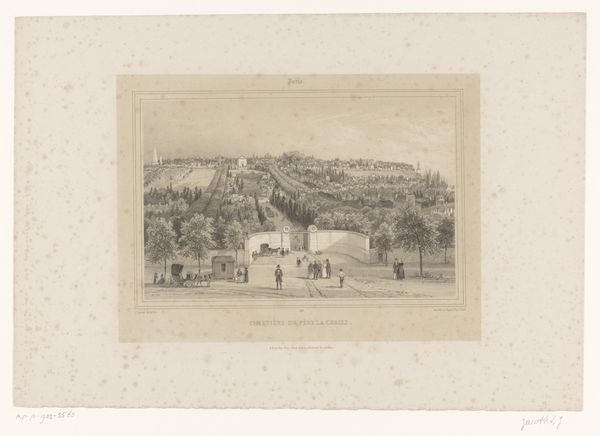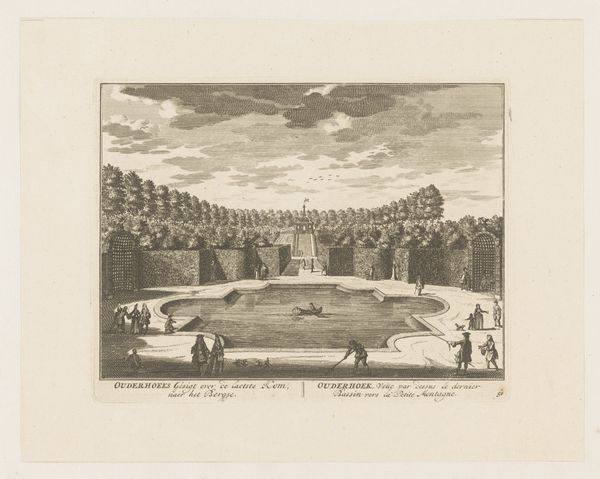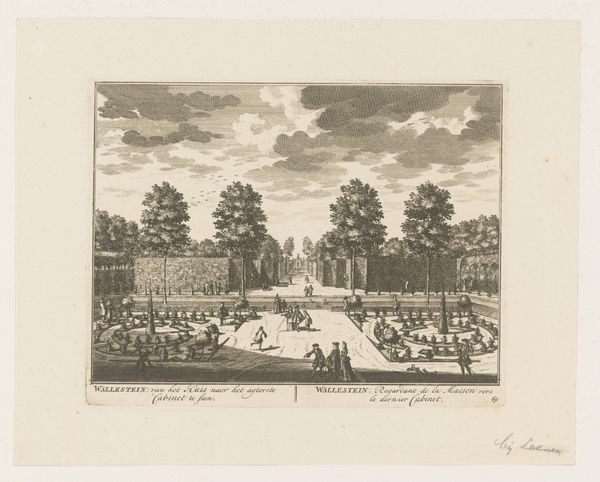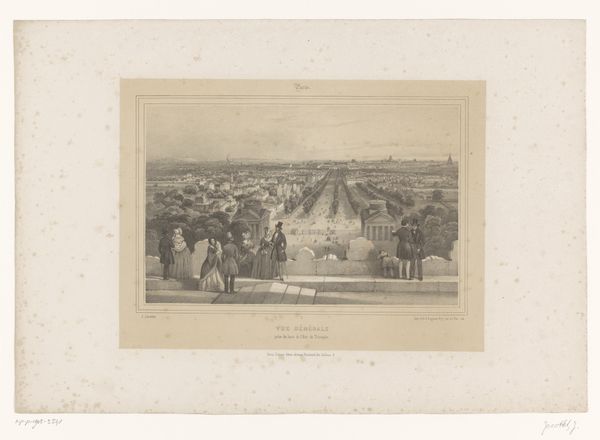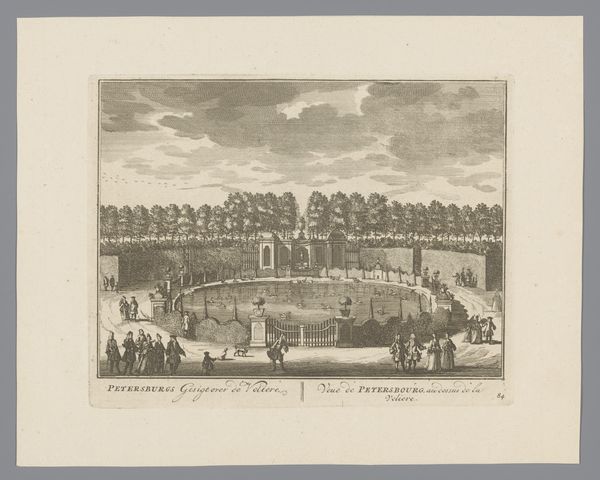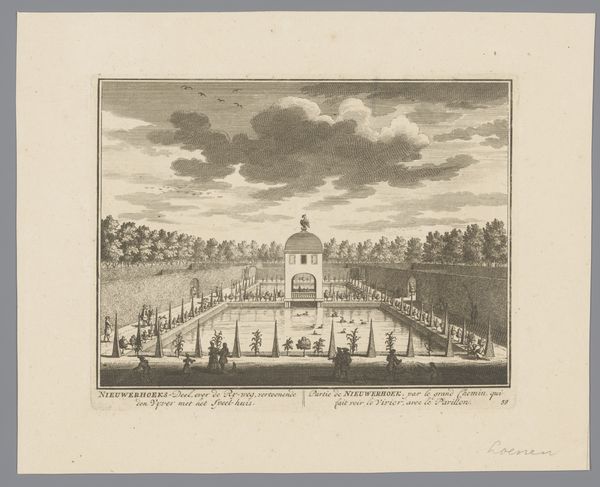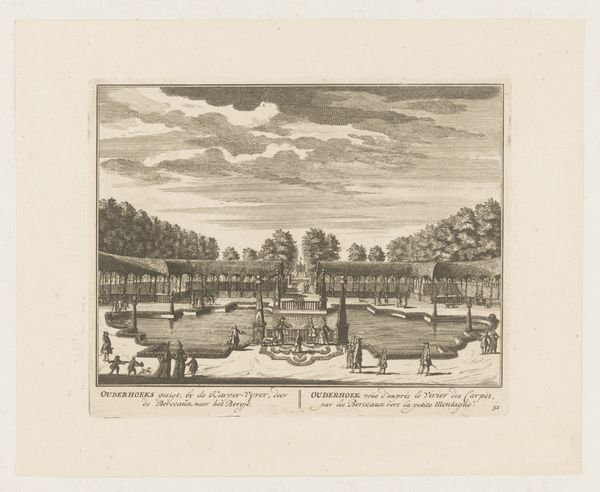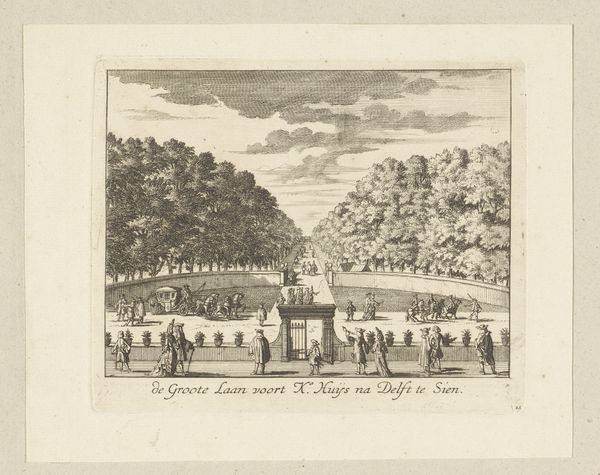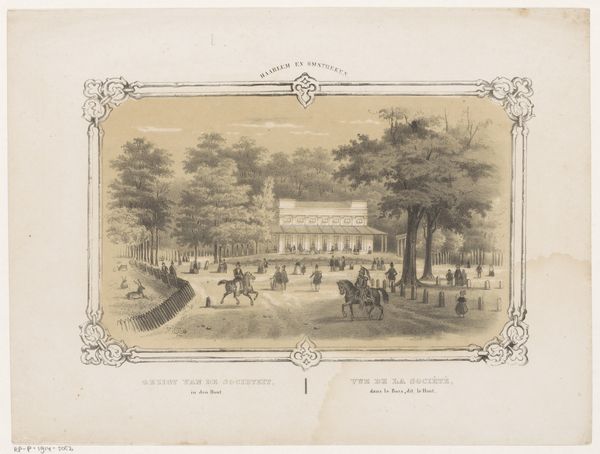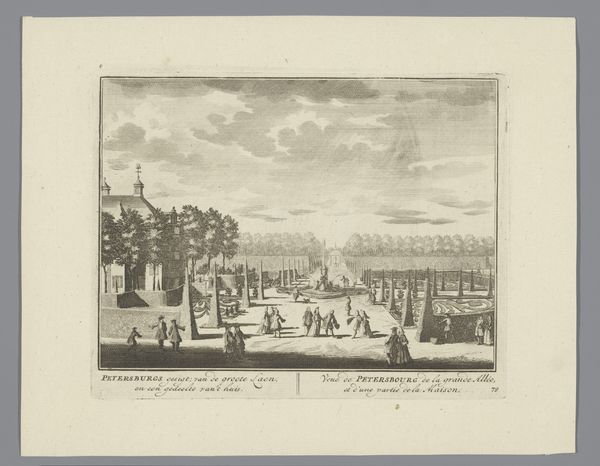
Zicht op het kasteel van Saint-Cloud in het park van Saint-Cloud 1838
0:00
0:00
louisjulienjacottet
Rijksmuseum
engraving
#
landscape
#
romanticism
#
cityscape
#
engraving
Dimensions: height 312 mm, width 452 mm
Copyright: Rijks Museum: Open Domain
Curator: Welcome. Before us, we have an engraving from 1838 by Louis-Julien Jacottet, titled “View of the Château de Saint-Cloud in the Park of Saint-Cloud," currently held at the Rijksmuseum. Editor: It feels meticulously ordered, doesn’t it? A highly controlled landscape of cascading water features and carefully arranged topiary. The linear precision gives it a somewhat serene, even artificial, air. Curator: Indeed. This is an example of Romantic landscape with a definite sense of place. Saint-Cloud was once an important royal residence; its representation here reflects the human desire to shape nature to project order and power. The figures are small, neatly arranged; their presence emphasizes human command of this domain. Editor: What interests me are the techniques used to produce the intricate details. Look at the contrast between the light reflecting off the water and the density of the foliage. Jacottet uses a network of finely etched lines to construct a very precise sense of texture. It feels cool because the chromatic range is very narrow. Curator: I see that the fountains become central visual elements that signify purification, or even enlightenment, reflecting philosophical trends of the time. Their repeated appearance across the composition guides the eye upward toward the palace, suggesting an ascent toward higher spiritual or intellectual understanding. What do you feel about its setting within French cultural memory? Editor: The setting reinforces that. Its geometric rigidity and balanced forms reflect neoclassical ideals embedded in French garden design, highlighting a preference for rationality and control in artistic representation. Curator: That preference also extends to social order. Representations of orderly landscapes were sometimes subtle attempts to create analogous associations with political stability. Editor: A subtle reminder of human aspiration, maybe. Jacottet really created an enduring and powerful composition using carefully arranged line and tone. Curator: And we might add the power of water as a vitalizing element that flows within memory, myth, and visual form. It’s quite fascinating to consider it from all these perspectives.
Comments
No comments
Be the first to comment and join the conversation on the ultimate creative platform.

